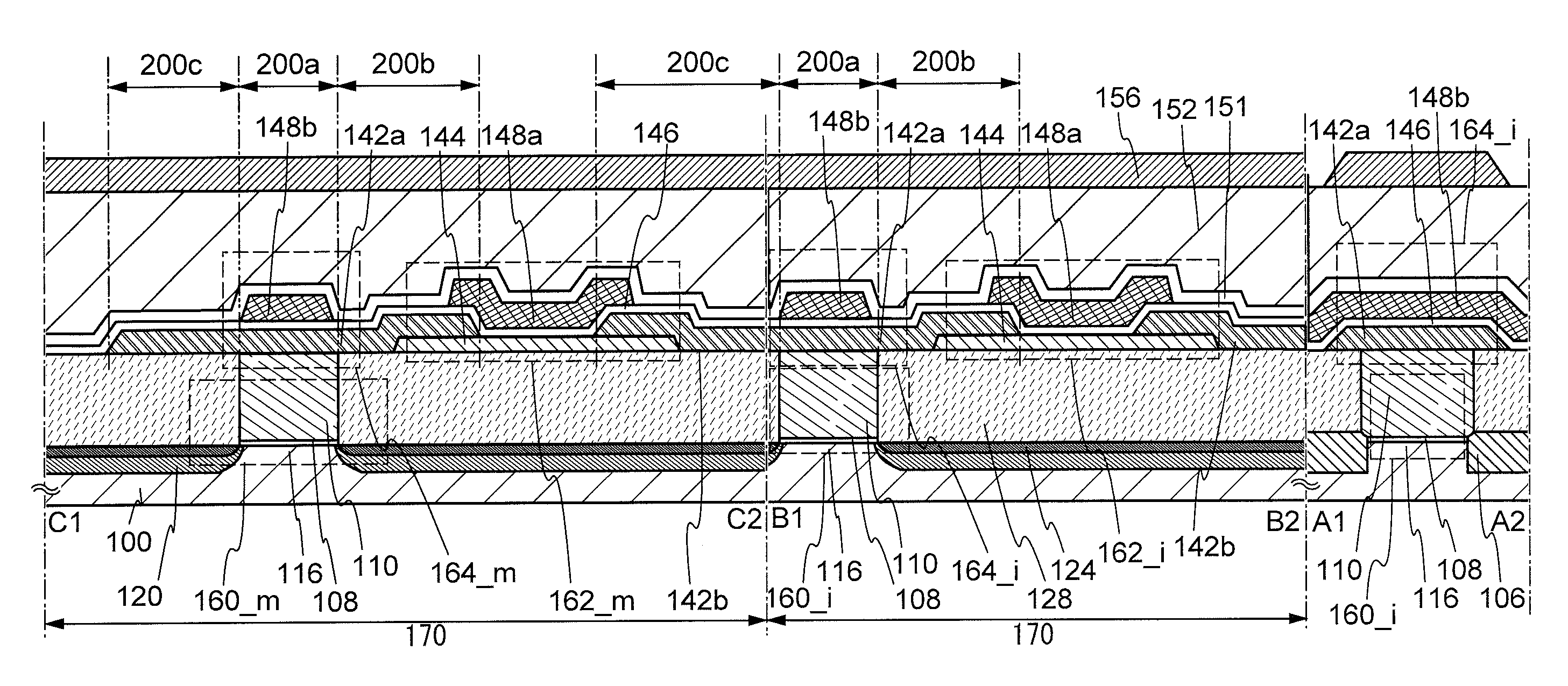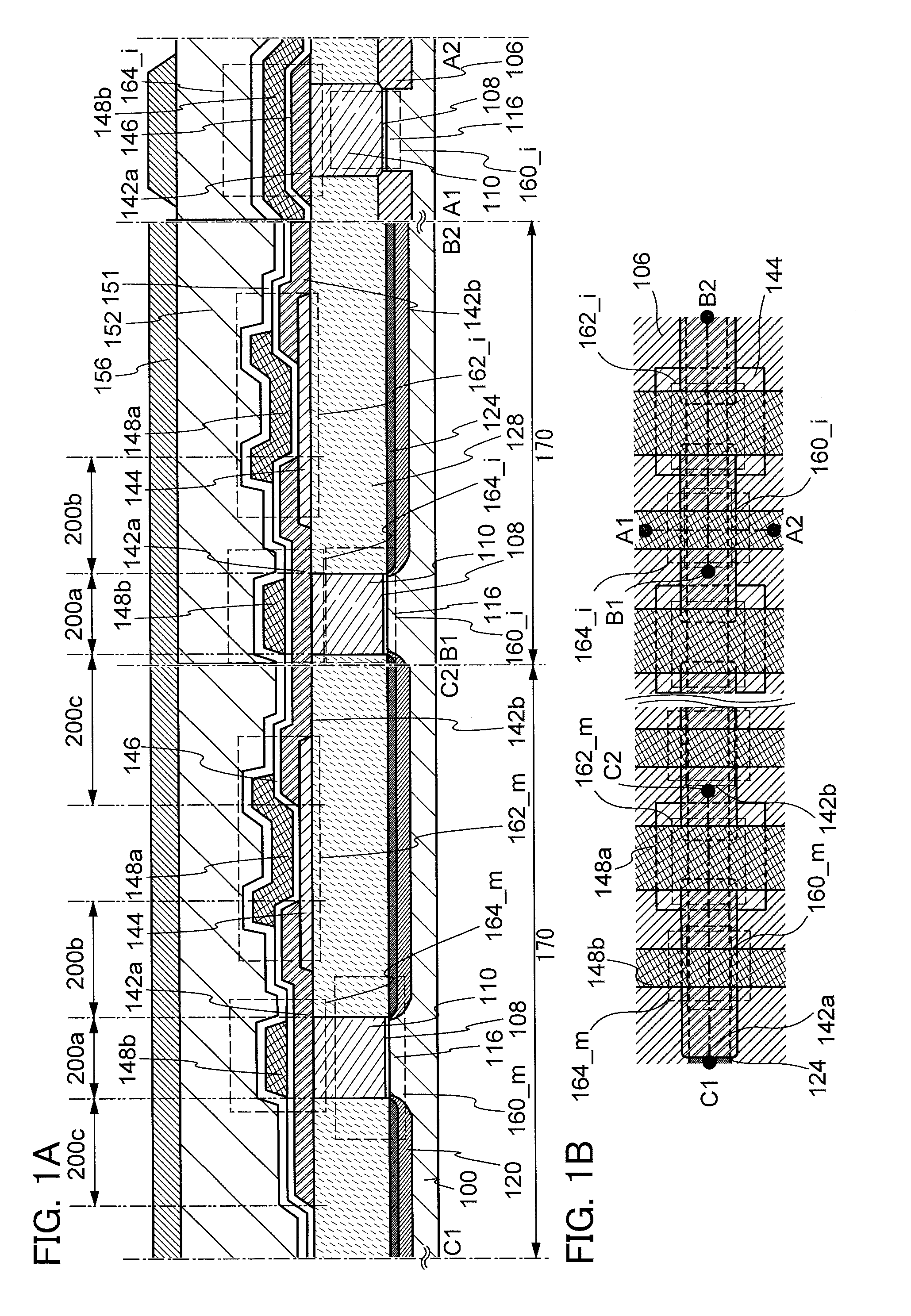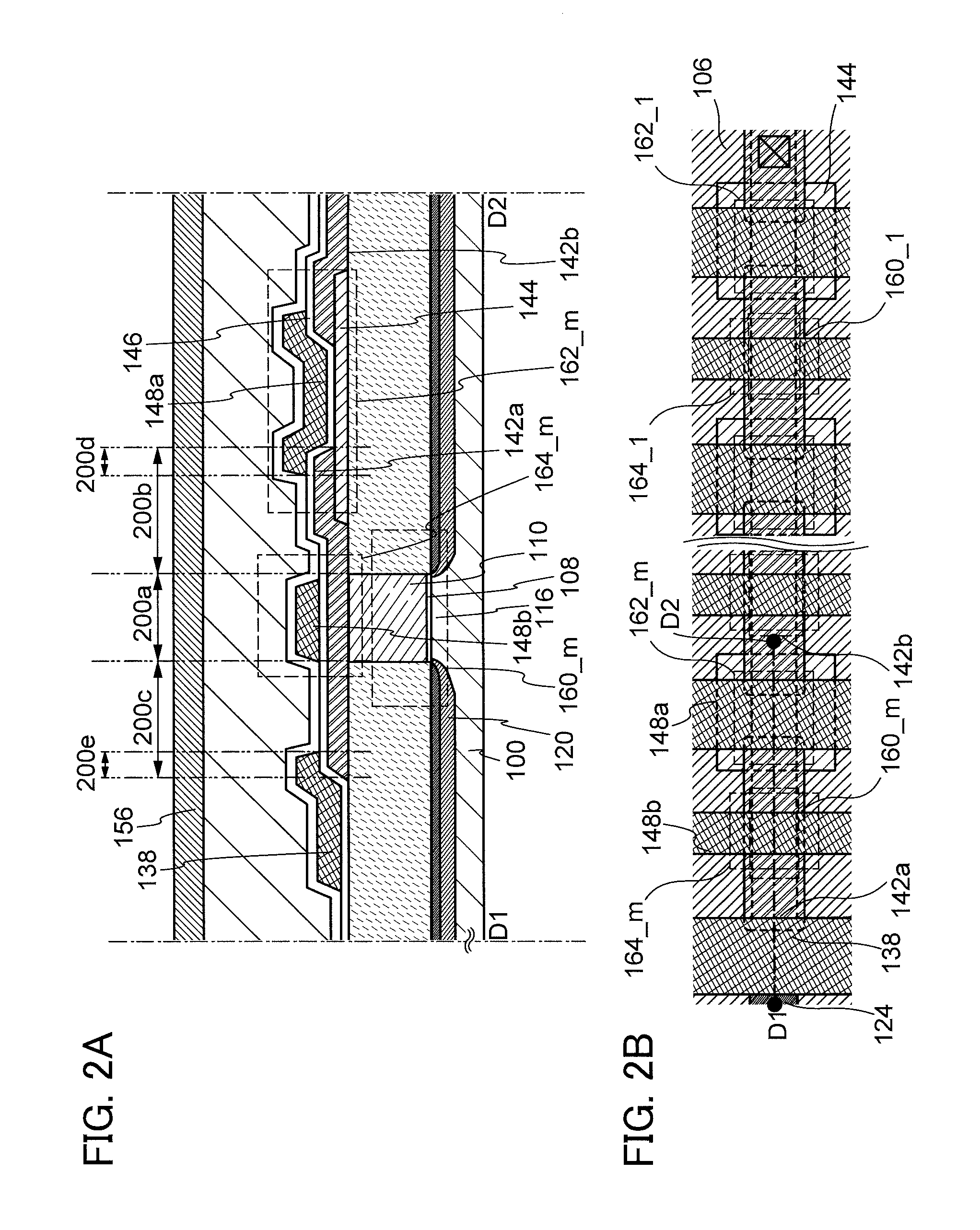Semiconductor device
- Summary
- Abstract
- Description
- Claims
- Application Information
AI Technical Summary
Benefits of technology
Problems solved by technology
Method used
Image
Examples
embodiment 1
[0043]In this embodiment, a circuit configuration and an operation according to one embodiment of the disclosed invention will be described with reference to drawings. Note that in some circuit diagrams, “OS” is written beside a transistor in order to indicate that the transistor includes an oxide semiconductor. In addition, a structure and a manufacturing method of a semiconductor device to which the circuit configuration is applied are described with reference to drawings.
[0044]First, a basic circuit configuration and an operation thereof will be described with reference to FIGS. 7A to 7C. In a semiconductor device illustrated in FIG. 7A, a first wiring (1st Line) is electrically connected to a source electrode (or a drain electrode) of a transistor 160. A second wiring (2nd Line) is electrically connected to the drain electrode (or the source electrode) of a transistor 160. A third wiring (3rd Line) is electrically connected to a source electrode (or a drain electrode) of a trans...
application example
[0070]Next, a more specific circuit structure to which the circuit illustrated in FIGS. 7A to 7C is applied and an operation thereof will be described with reference to FIG. 8 and FIGS. 9A to 9C.
[0071]A semiconductor device illustrated in FIG. 8 is an example of a circuit diagram of a semiconductor device including m memory cells 170. The structure of the memory cells 170 in FIG. 8 is similar to that in FIG. 7A. That is, the first wiring in FIG. 7A corresponds to a bit line 13L in FIG. 8; the second wiring in FIG. 7A, a source line SL in FIG. 8; the third wiring in FIG. 7A, a signal line S in FIG. 8; the fourth wiring in FIG. 7A, a write word line WWL in FIG. 8; and the fifth wiring in FIG. 7A, a read word line RWL in FIG. 8. FIG. 8 is a circuit diagram of a so-called NAND type semiconductor device in which the memory cells 170 are connected in series between the bit line BL and the source line SL. In the configuration of FIG. 8, the bit line BL and the drain electrode of the transi...
embodiment 2
[0201]In this embodiment, electronic devices to which the semiconductor device described in Embodiment 1 is applied to will be described with reference to FIGS. 10A to 10F. In this embodiment, the above-described semiconductor device is applied to electronic devices such as computers, mobile phone sets (also referred to as mobile phones o mobile phone devices), portable information terminals (including portable game machines, audio reproducing devices, and the like), digital cameras, digital video cameras, electronic paper, television sets (also referred to as televisions or television receivers), and the like.
[0202]FIG. 10A illustrates a notebook personal computer, which includes a housing 701, a housing 702, a display portion 703, a keyboard 704, and the like. The semiconductor device described in Embodiment 1 is provided in at least one of the housings 701 and 702. Thus, a notebook personal computer with sufficiently low power consumption, in which writing and reading of data can...
PUM
 Login to View More
Login to View More Abstract
Description
Claims
Application Information
 Login to View More
Login to View More - R&D
- Intellectual Property
- Life Sciences
- Materials
- Tech Scout
- Unparalleled Data Quality
- Higher Quality Content
- 60% Fewer Hallucinations
Browse by: Latest US Patents, China's latest patents, Technical Efficacy Thesaurus, Application Domain, Technology Topic, Popular Technical Reports.
© 2025 PatSnap. All rights reserved.Legal|Privacy policy|Modern Slavery Act Transparency Statement|Sitemap|About US| Contact US: help@patsnap.com



